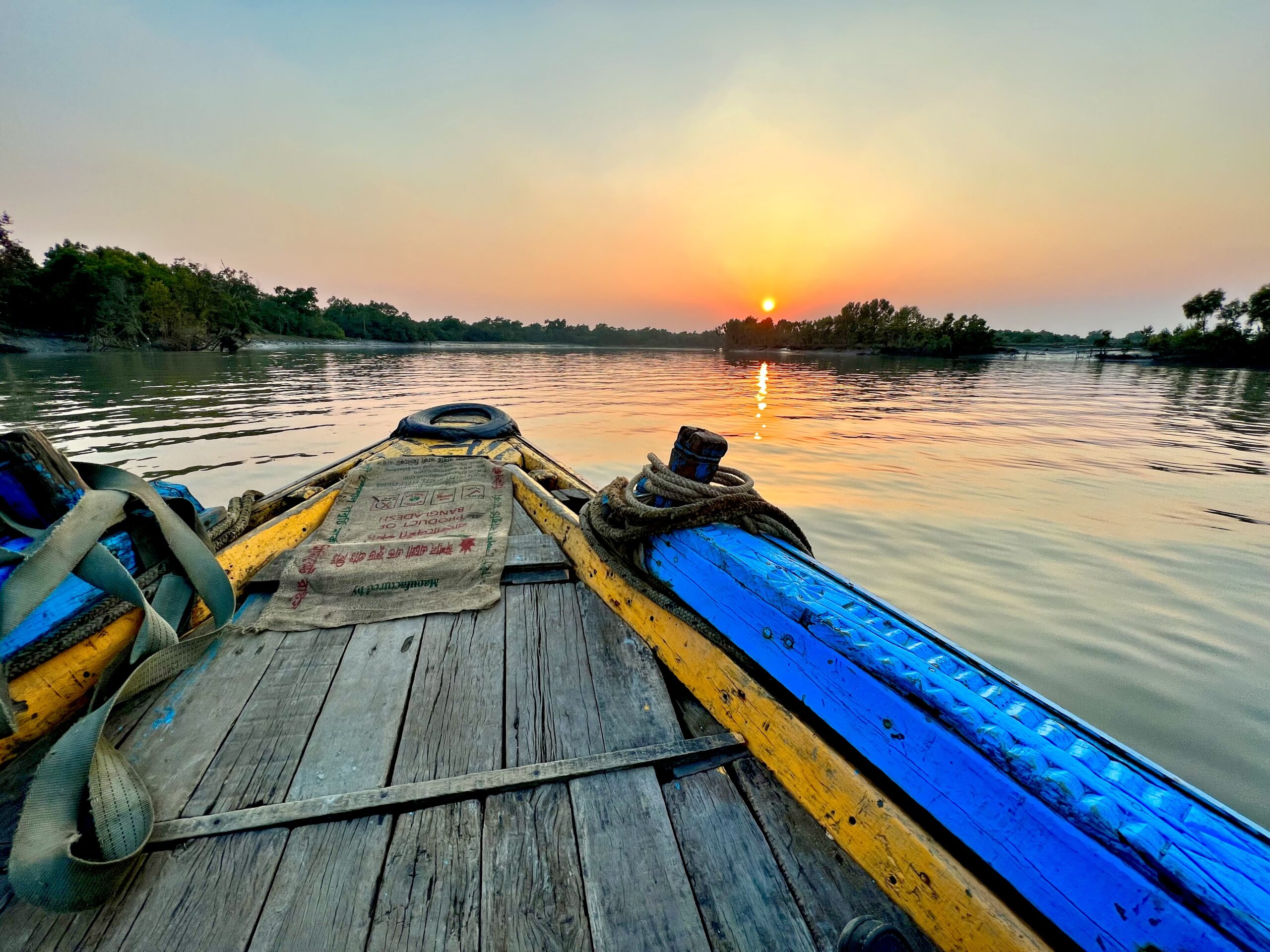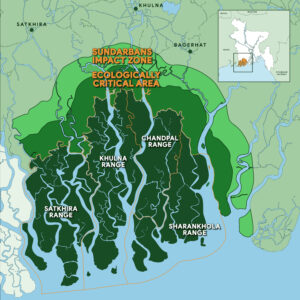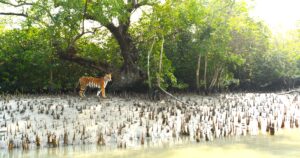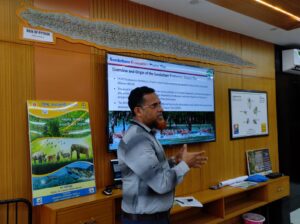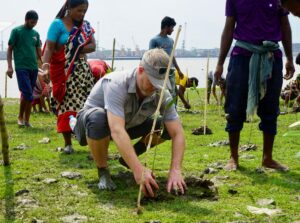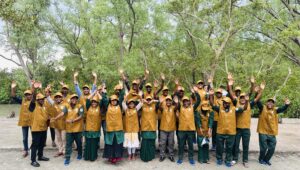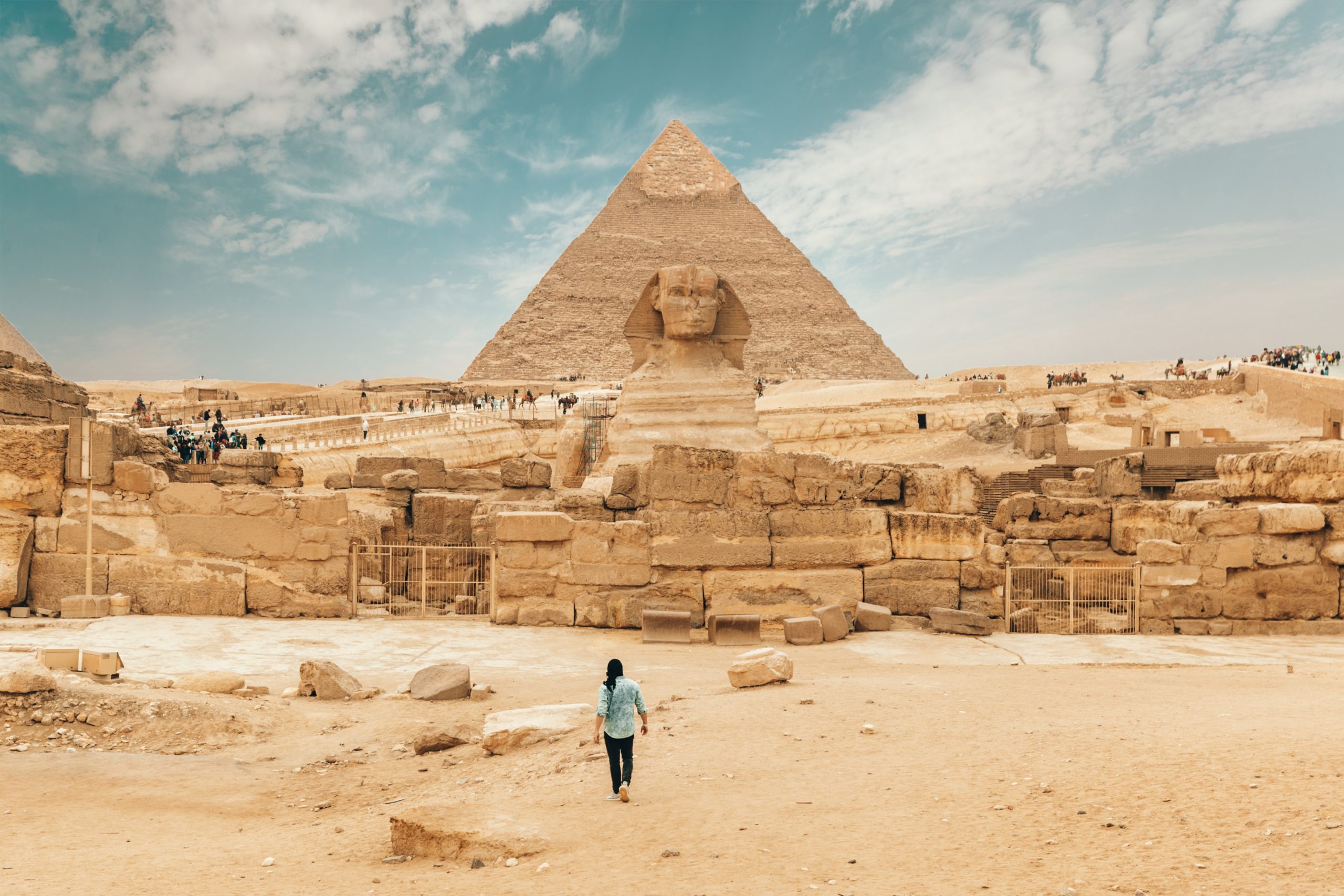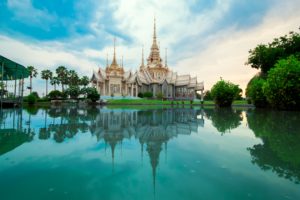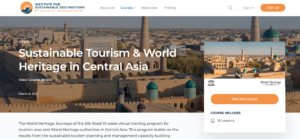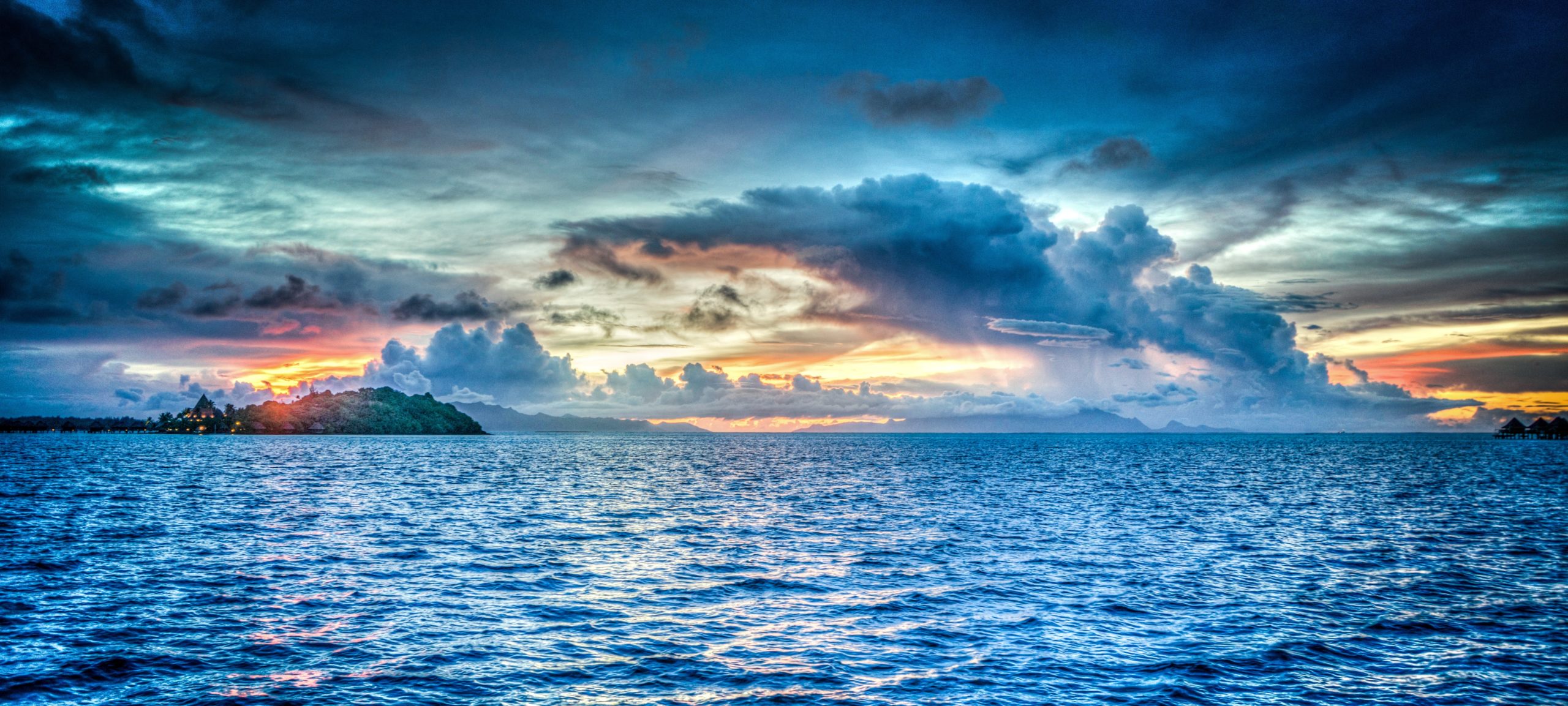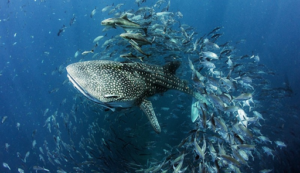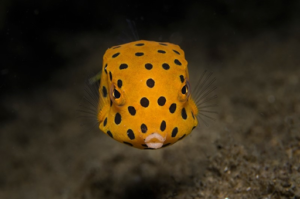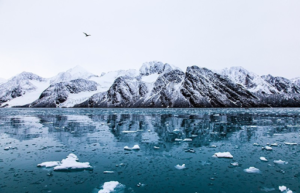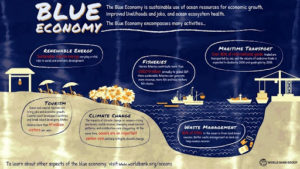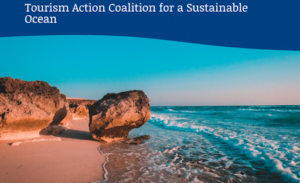The Role of DMOs in Shaping the Future of Tourism
Destination Management Organizations (DMOs) are the backbone of regional tourism, acting as the strategic coordinators and stewards of many visitor economies worldwide. Traditionally recognized as tourism boards or convention and visitors bureaus (CVBs), DMOs have evolved far beyond their initial roles as marketers of attractions or conference spaces. Today, they are critical players in aligning tourism growth with community values, economic goals, and sustainability imperatives.
The success of DMOs in emerging destinations now depends on their ability to harness technologies and innovative practices. They must adapt to new practices like Artificial Intelligence Optimization (AIO) which focuses on enhancing content for AI-driven platforms rather than traditional search engines (SEO). From enhancing visitor experiences through personalization to addressing complex challenges like overtourism and climate change, technology offers powerful tools to shape the future of destination management.
Some may argue this transition isn’t as widespread or immediate as presented and that smaller DMOs, with limited resources, cannot realistically adopt some of these strategies. However, this article highlights the importance of embracing new technologies to remain competitive, engage audiences effectively, and manage the complexities of modern tourism. It explores how DMOs today are leveraging technology and innovation to meet these challenges head-on, ensuring sustainable growth and enriched visitor experiences in 2025 and beyond.
Emerging Technologies in Destination Management
As tourism evolves, DMOs are adopting foundational technologies that address macro-level challenges and shape strategic operations. These innovations enable smarter planning, enhanced sustainability, and improved resource allocation, paving the way for a more resilient and efficient destination management framework.
For DMOs often working with limited budgets and small teams, technology offers not only transformative possibilities but also practical solutions for improving efficiency. AI, for instance, can automate labor-intensive tasks, allowing DMOs to do more with less while maintaining high levels of service and engagement. This leaves more space for focused human interaction between staff and stakeholders.
In this section, we’ll explore four foundational technologies transforming the future of destination management. Each offers unique opportunities for DMOs to improve efficiency, engagement, and impact in 2025 and beyond.
1. Data Analytics and Artificial Intelligence (AI)
Data and AI are revolutionizing how DMOs make decisions and engage with visitors.
- What it is: Data analytics involves collecting and interpreting large datasets to uncover patterns and insights. AI refers to technologies that simulate human intelligence, such as machine learning and natural language processing.
- How DMOs use it:
- Visitor Insights: Analyze visitor behavior to identify trends, predict demand, and target specific demographics.
- Personalized Experiences: Use AI algorithms to recommend tailored activities, itineraries, and offers, enhancing visitor satisfaction and engagement.
- Example: VisitScotland uses AI-driven analytics to understand traveler preferences and optimize its marketing campaigns, boosting engagement with potential visitors. It also teaches its partners how to use AI in their digital marketing.
2. Digital Twin Technology
Digital twins provide DMOs with a virtual mirror of real-world environments, though this may not be fully feasible for regions with budget constraints or less digital infrastructure.
- What it is: A digital twin is a virtual model of a physical destination that reflects its real-time state, enabling scenario simulations and analysis.
- How DMOs use it:
- Planning and Crisis Management: Simulate the impact of new infrastructure, large-scale events, or environmental changes to improve decision-making.
- Visitor Flow Optimization: Test strategies for managing crowds, reducing congestion, and dispersing tourists to lesser-known areas.
- Example: The Singapore Tourism Board employs digital twin technology to model visitor movement patterns, helping the city efficiently manage tourist hotspots and ensure sustainability. According to this MDPI Platforms article (December 2024), New York, Herrenberg, the New South Wales, Vienna, Zurich, Glasgow, Cambridge and Nottingham join Singapore in implementing Digital Twin technology “to more efficiently develop their urban planning, promote a more sustainable tourism model, and be more respectful of the environment.”
3. Blockchain Applications
Blockchain technology enhances security, transparency, and trust in tourism transactions.
- What it is: A decentralized and secure ledger technology that records transactions transparently and immutably.
- How DMOs use it:
- Transparent Transactions: Improve accountability and reduce fraud in partnerships with tourism stakeholders.
- Loyalty Programs: Create decentralized reward systems where tourists can earn and redeem points across multiple destinations or businesses.
- Ticketing Systems: Streamline secure and tamper-proof ticket sales for attractions and events.
- Example: These articles by Appinventiv and Apco describe blockchain use in travel services and decentralized booking marketplaces for hotels and airlines, including TUI, Travel Chain, Flight Delay, Webjet, Travelport, and Singapore Airlines, among others.
4. Augmented and Virtual Reality (AR/VR)
AR and VR offer immersive experiences that bridge the gap between imagination and reality.
-
- What it is: AR overlays digital elements onto the real world through devices like smartphones or glasses, while VR creates fully immersive digital environments using headsets or physical onsite installations.
- How DMOs use it:
- Pre-Travel Experiences: Allow potential visitors to explore destinations virtually, helping them plan their trips with confidence.
- Marketing and Preservation: Showcase cultural sites and natural wonders in an engaging, immersive way while protecting fragile areas from overexposure.
- Inclusivity: Provide access to destinations for individuals with mobility challenges or other limitations, ensuring equitable experiences through virtual tours.
- Example: The Jordan Tourism Board uses VR to allow prospective visitors to explore Petra and other iconic sites virtually, boosting interest and bookings. While critics might argue that AR/VR experiences could dissuade people from visiting destinations in person, Baia Experience in Bacoli, Italy, uses VR as an inclusivity tool for those who are not able to dive or otherwise visit the underwater archeological site.

A VR tour of Iraq Al Amir allows visitors to experience this historic site remotely, showcasing the Jordan Tourism Board’s innovative use of technology.
While these technologies transform the strategic and operational aspects of DMOs, direct visitor engagement relies on tools that personalize experiences and foster stronger traveler connections.
Tools Transforming Visitor Engagement
In addition to strategic innovations, DMOs are leveraging traveler-facing tools to enhance engagement and streamline experiences. In a world where travelers increasingly rely on technology for planning, booking, and sharing their experiences, DMOs must embrace innovative tools to stay relevant. These technologies enable destinations to build stronger connections with visitors, offering real-time assistance, tailored recommendations, and more immersive journeys. By integrating tech solutions such as mobile apps, AI trip planners, chatbots, and optimized social media platforms, DMOs can create seamless, personalized experiences that not only attract visitors but also foster deeper connections with destinations.
This section gives an overview of some of the most transformative tools reshaping visitor engagement in 2025 and beyond, enabling DMOs to meet traveler expectations while supporting sustainable and community-focused tourism development.
1. Mobile Applications and SuperApps
Mobile apps and superapps are reshaping how travelers interact with destinations.
- What it is: Mobile applications are software programs designed to provide specific services or information to users, while superapps integrate multiple services into a single platform for greater convenience.
- How DMOs use it:
- Streamlined Planning: Provide a one-stop platform for booking accommodations, planning itineraries, and accessing real-time information.
- Location-Based Services: Offer GPS-enabled maps, audio guides, and alerts about nearby attractions or events.
- Example: Tourism Australia’s app features interactive maps, personalized recommendations, and real-time travel tips to enhance visitor experiences while exploring the country.
2. Chatbots and Virtual Assistants
Chatbots and virtual assistants are enhancing customer service for travelers.
- What it is: These AI-powered tools simulate human conversation to assist users with inquiries or tasks, often through messaging apps or websites.
- How DMOs use it:
- 24/7 Support: Answer frequently asked questions and provide instant travel assistance at any time.
- Multilingual Capabilities: Communicate with international visitors in their native languages.
- AI Trip Planners: Embed trip planning tools on DMO websites and apps where visitors can curate itineraries by selecting experiences, blogs, and influencer content tailored to their interests.
- Example: The Montserrat Tourism Division has launched a chatbot they call “Oriole” (after the national bird) to help travelers plan a trip to the British Overseas Territory located in the Eastern Caribbean.
3. Social Media Integration and User-Generated Content (UGC)
Social media platforms and UGC are vital for promoting destinations and engaging visitors.
- What it is: Social media integration allows destinations to connect with travelers on popular platforms, while UGC involves content (e.g., photos, reviews) created and shared by visitors themselves.
- How DMOs use it:
- Community Building: Foster engagement by sharing user-generated content and encouraging travelers to participate in storytelling.
- Real-Time Feedback: Monitor social media conversations to address concerns and capitalize on emerging trends.
- Example: Iceland’s “Inspired by Iceland” campaign used UGC and interactive social media strategies to create a global buzz and attract millions of new visitors.
4. Social Media Trend Analysis and Viral Pattern Recognition
Viral trends on social media are shaping traveler behavior like never before (I’m looking at you, “Instagram vs. Reality” posts!).
- What it is: The use of data analytics and AI tools to identify and respond to viral content or trending destinations.
- How DMOs use it:
- Early Detection: Recognize viral hotspots and prepare the destination for an influx of tourists, with the goal to provide a better visitor experience.
- Sustainability Planning: Implement crowd management strategies to protect fragile sites from overexposure.
- Example: There are numerous examples of viral Instagram posts ruining destinations (Santorini, Indonesia, and so many others). One reactive example is Trolltunga, a dramatic cliff in Norway that gained global attention around 2010 due to viral Instagram photos. Previously an obscure hiking spot, Trolltunga saw visitor numbers skyrocket from a few hundred annually to over 80,000 by 2016. This surge led to overcrowded trails, extended photo queues, safety risks, and environmental degradation, forcing local authorities to implement infrastructure improvements and visitor management strategies.
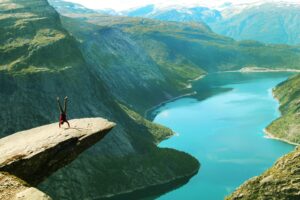
A daring handstand on Trolltunga, Norway’s iconic cliff, highlights the stunning yet fragile beauty of this viral tourist destination. Photo by Lina Sali on Pexels.
While many DMOs successfully use viral social media campaigns to draw visitors and some have successfully reacted to the influx of crowds caused by UGC and other media, proactive use of social media trend analysis to preempt and manage crowds remains rare. This indicates a growing opportunity for DMOs to monitor social media trends and UGC to anticipate visitor surges and mitigate impacts.
Innovations in Sustainable Tourism Management
The phenomenon of overtourism, often driven by social media trends, underscores the urgent need for conservation and regenerative tourism practices. While the allure of a picture-perfect destination can attract economic benefits, it also risks overwhelming local communities and ecosystems if not managed responsibly. This challenge has prompted DMOs to adopt innovative solutions that balance tourism growth with environmental conservation and community well-being.
In this section, we explore how technology and forward-thinking strategies are helping DMOs foster sustainability. From smart infrastructure that monitors tourist impact to green financing, payment for eco-system services (PES) and other carbon economy technologies, these innovations aim to ensure that tourism enhances rather than detracts from destinations’ long-term health and vitality.
1. IoT and Smart Infrastructure
IoT (Internet of Things) and smart infrastructure are transforming how DMOs monitor and manage destinations.
- What it is: IoT refers to interconnected devices that collect and exchange data, while smart infrastructure integrates these technologies to optimize resource use and improve efficiency.
- How DMOs use it:
- Impact Monitoring: Track visitor numbers, environmental changes, and cultural site usage in real time to inform management strategies.
- Smart Waste and Energy Management: Use sensors to optimize waste collection and energy consumption in popular tourist areas.
- Example: The Serengeti National Park in Tanzania uses IoT sensors to monitor visitor activities and mitigate human-wildlife conflict, ensuring a sustainable balance between tourism and conservation.
2. Eco-Tracking Tools
Eco-tracking tools encourage sustainable travel by empowering visitors to minimize their environmental impact.
- What it is: Mobile apps and platforms designed to help tourists track their carbon footprint and access eco-friendly travel options.
- How DMOs use it:
- Carbon Footprint Tracking: Provide insights into emissions from transport, accommodations, and activities, with suggestions for net zero or mitigating alternatives.
- Promoting Eco-Friendly Itineraries: Recommend low-impact travel routes and businesses that adhere to sustainable practices.
- Example: The trip planner tool used by Visit Costa Rica (powered by mindtrip) guides visitors to certified sustainable hotels and tours, promoting eco-conscious travel choices across the destination.
3. Renewable Energy and Resource Innovations
DMOs are integrating renewable energy to power tourism operations sustainably.
- What it is: The use of solar, wind, and other renewable energy sources to reduce reliance on fossil fuels in the tourism sector.
- How DMOs use it:
- Tourism Operations: Power accommodations, transportation, and attractions with renewable energy.
- Showcasing Sustainability: Highlight renewable energy initiatives as a marketing tool to attract environmentally conscious travelers.
- Example: The Maldives has introduced solar-powered accommodations and water desalination plants, reducing environmental impact while supporting its reputation as a destination combating climate change.
4. Citizen Science Technologies
Citizen science technologies empower locals and visitors to contribute to sustainability efforts by collecting and sharing valuable environmental data.
- What it is: Tools, such as mobile apps and online platforms, that enable non-experts to participate in scientific research, often by recording observations or measurements.
- How DMOs use it:
- Environmental Monitoring: Engage visitors in tracking wildlife sightings, reporting pollution, or documenting biodiversity to support conservation initiatives.
- Community Involvement: Strengthen local involvement in tourism by encouraging residents to participate in preserving cultural and natural assets.
- Example: The year-long “InnoVET Tourism” project, funded by Erasmus+ and the EU, explored possibilities of using information technologies and citizen science in vocational tourism education to map tourist attractions, addressing challenges that the tourism sector cannot solve on its own. In other market examples, a tour company out of Portugal offers trips with citizen science components, partnering with the International Union for Conservation of Nature (IUCN), while the Talviseuranta platform records observations of snow, ice and winter species for the Finnish Environment Institute.
How Solimar International Uses Technology to Enhance Destination Management
To illustrate some of these principles in action, the following reviews Solimar International’s use of technology in supporting sustainable destination management in some recent global projects. By leveraging digital tools and strategies, Solimar has helped destinations improve visitor engagement, foster sustainability, and adapt to the challenges of a rapidly evolving tourism industry. This section highlights how Solimar integrates technology into its work to drive positive outcomes for destinations and communities.
Armenia: Leveraging Technology for Targeted Destination Marketing
The Armenia Tourism Committee partnered with Solimar, Azira, and TripScout to implement a cutting-edge digital marketing campaign, showcasing how technology can enhance destination visibility and engagement. By utilizing Azira’s advanced consumer behavior insights and data analytics, the campaign developed hyper-targeted advertising strategies tailored to key markets, including the USA, Germany, France, and the UAE. The collaboration with TripScout leveraged a global network of 70 million travelers to amplify Armenia’s appeal through authentic content creation and immersive storytelling. The campaign delivered over 30 million impressions and significant growth in online engagement, demonstrating the power of technology-driven strategies in positioning destinations on a global stage.
DMO Projects on iNaturalist: Engaging Tourists in Citizen Science for Developing Destinations
In Bangladesh, Solimar established the Greater Sundarbans Ecotourism Society (GSETS) and launched the “Bangladesh Sundarbans Ecotourism Observations” project on iNaturalist, contributing valuable data to support conservation in this UNESCO World Heritage Site and Ramsar Wetland. On the same platform, Solimar set up the “Plant and Wildlife of Oni Municipality” project for the Tourism Cluster of Oni to showcase the remarkable biodiversity of this region in the Republic of Georgia. These citizen science initiatives encourage visitors and locals to record biodiversity observations documenting the area’s natural heritage, bridging tourism and conservation.

Explore the biodiversity of the Greater Sundarbans with the “Bangladesh Sundarbans Ecotourism Observations” project on iNaturalist—where citizen scientists contribute to conservation efforts in this UNESCO World Heritage Site.
Discover Sugar River Region: Implementing Solimar’s DMMS
Solimar introduced its Destination Management and Marketing System (DMMS) to the Discover Sugar River Region (DSRR) in Sullivan County, New Hampshire, to support the newly formed DMO. The DMMS sets up automations and integrates web-based tools, including Asana and Canva, to streamline destination management and marketing processes. Tailored modules address key challenges such as strategy development, asset inventory, industry engagement, and sustainability. AIO is used for the development of long-form articles and FAQ-style content. Task and project tracking automation is set up for a more efficient one-person staff. This project has empowered the DSRR to effectively promote the region’s assets, engage stakeholders, and foster sustainable tourism growth.
The Solimar DMMS features 12 integrated modules designed to empower DMOs with tools for sustainable tourism management and effective marketing.
Key Challenges and Solutions for DMOs Adopting Technology
While technology and innovation present exciting opportunities for DMOs, they also bring inherent challenges that must be addressed to ensure equitable and sustainable outcomes.
One prominent concern is the digital divide—the unequal access to technology and infrastructure across regions. Smaller DMOs or those in emerging destinations may lack the resources to adopt even basic digital tools, nevermind cutting-edge emerging technologies. Solimar experiences this often during tourism projects in developing nations where cash and print are still used and preferred in day-to-day, standard operations. To address this, scalable and adaptable technologies must be prioritized. Capacity building and partnerships or grant-based funding playing a critical role in bridging these gaps. Ensuring inclusivity and accessibility remains a key consideration as DMOs innovate.

Older generations exploring with a digital touch: Smart tools like mobile apps and IoT devices enhance visitor experiences while connecting and engaging travelers of all ages. Photo by Marcus Aurelius on Pexels.
As DMOs rely more on apps, chatbots, and AI-driven solutions, they must also consider the potential alienation of certain traveler demographics, particularly older visitors or those less comfortable with technology. These tools offer efficiency, scalability, and are becoming more human-like or at least easier to seamlessly use across technology skillsets. Still, they should complement, not replace, human interaction. Incorporating hybrid models—where technology enhances but doesn’t overshadow the personal touch—ensures that all visitors feel valued and accommodated. For instance, chatbots can handle routine inquiries while directing complex or sensitive matters to human representatives, maintaining the warmth and authenticity that travelers often seek.
Cybersecurity and data privacy also emerge as significant challenges in an increasingly digital tourism landscape. With growing reliance on AI, IoT, and data analytics, DMOs must implement robust safeguards to protect visitor data while maintaining transparency and trust. This includes adhering to international standards for data protection and proactively educating stakeholders about ethical data use.
Finally, balancing innovation with cultural authenticity is vital. While technology can amplify a destination’s visibility, it should never overshadow its unique identity or heritage. Similarly, social media virality, while valuable for marketing, can lead to unintended consequences such as overtourism and environmental strain. DMOs must adopt a proactive approach to manage viral trends, leveraging technology to monitor visitor behavior and encourage tourist crowd dispersion to less popular sites, attractions and seasons. This not only preserves the destination’s long-term appeal but also ensures that tourism growth benefits local communities and ecosystems.
By acknowledging these challenges and integrating thoughtful solutions, DMOs can maximize the benefits of technology while mitigating potential downsides.
Actionable Strategies for DMOs to Leverage Technology Effectively
Adopting and integrating technology effectively is essential for DMOs to remain competitive and relevant in a rapidly evolving tourism landscape. Here are key strategies to guide this process:
- Embrace Data-Driven Decision Making
Utilize big data analytics and AI to gain insights into visitor behavior, predict trends, and optimize marketing campaigns. Data should inform strategic planning to enhance both visitor satisfaction and operational efficiency. - Integrate Visitor-Facing Technologies
Deploy mobile apps, chatbots, and AI trip planners to improve visitor engagement and provide personalized experiences. Ensure these tools are intuitive and accessible to diverse audiences. - Promote Sustainability Through Technology
Leverage IoT sensors, eco-tracking apps, and renewable energy solutions to monitor environmental impact, promote sustainable tourism practices, and reduce the destination’s carbon footprint. - Prepare for Social Media Virality
Use social media analytics and trend monitoring to anticipate viral content impacts, manage crowds, and proactively disperse visitors to underutilized areas or off-peak seasons. - Foster Inclusivity with Tech Solutions
Implement AR/VR experiences to make destinations accessible to individuals with mobility challenges or other limitations, ensuring equitable access to tourism experiences. - Focus on Scalable and Adaptable Tools
Start with cost-effective, scalable solutions like modular destination management platforms (e.g., DMMS) that can evolve alongside the DMO’s capacity and resources. - Invest in Capacity Building
Equip staff and stakeholders with training to use and manage new technologies effectively. Include regular workshops, online courses, and collaborative learning initiatives to build long-term capacity. - Strengthen Cybersecurity and Data Privacy
Protect visitor and stakeholder data by adhering to international standards for cybersecurity and ethical data use, ensuring trust and transparency in digital operations. - Bridge the Digital Divide
Partner with tech providers, academic institutions, NGOs, and governments to secure grant-based funding or collaborative investments, ensuring emerging destinations can adopt basic and advanced technologies. - Collaborate with Expert Consultants
Work with specialists like Solimar International to design and implement tech-driven strategies tailored to the destination’s unique needs, ensuring sustainable and impactful growth.
Leading Tourism into the Future: A Call to Action for DMOs
The integration of technology and innovation into destination management is no longer a luxury—it’s a necessity. From managing visitor experiences to promoting sustainability and adapting to emerging trends, DMOs have an unprecedented opportunity to shape the future of tourism in meaningful ways. By embracing tools like AI, IoT, and blockchain, DMOs can position themselves as leaders in a digital-first world.
As technology becomes more intuitive and ingrained in everyday life, DMOs that adapt now will not only remain competitive but also create lasting impacts on the communities they serve and the destinations they represent. The thoughtful integration of technology enables DMOs to balance economic growth, environmental sustainability, and cultural preservation.
The future of tourism is dynamic, digital, and deeply interconnected. DMOs must act boldly to integrate technology into their strategies, ensuring that tourism growth benefits both people and the planet. If your organization is ready to embrace this transformation, Solimar International is here to help. With a proven track record of guiding DMOs worldwide, we offer the expertise, tools, and support needed to navigate this digital evolution.
Contact us today to explore how we can help your destination thrive in a rapidly changing tourism landscape


